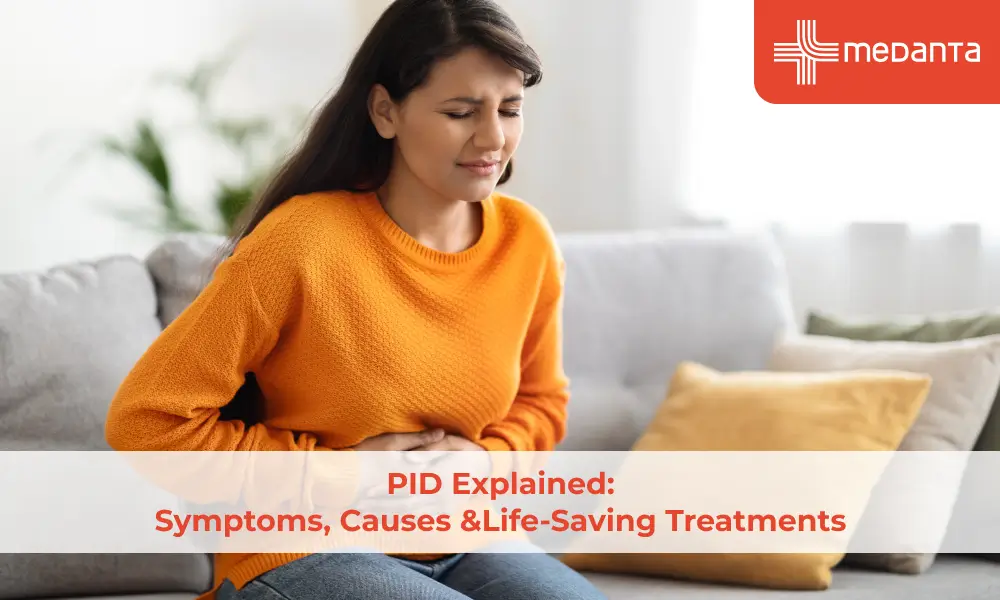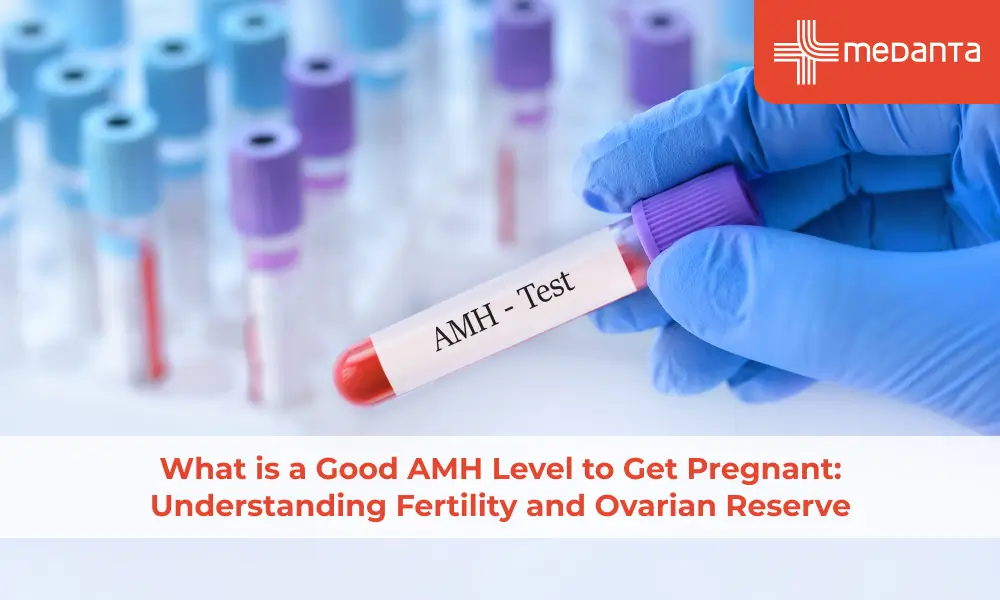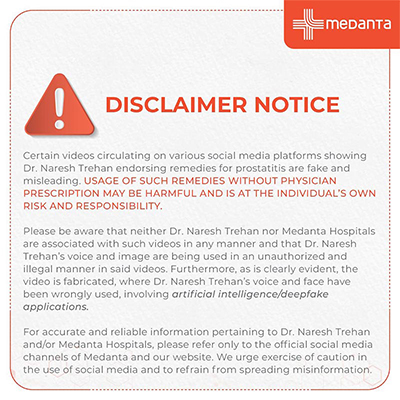PID Explained: Symptoms, Causes & Life-Saving Treatments

TABLE OF CONTENTS
- What is Pelvic Inflammatory Disease (PID)?
- Pelvic Inflammatory Disease Symptoms
- Pelvic Inflammatory Disease Causes
- Pelvic Inflammatory Disease Treatments
- Complications of Pelvic Inflammatory Disease
- How to Identify PID Early and When to Visit a Doctor?
- Regular Check-Ups & Preventative Care
- Final Thoughts
- FAQs
Pelvic Inflammatory Disease (PID) is a severe infection of the female reproductive organs, i.e., the uterus, fallopian tubes, and ovaries. But this type of disease doesn't go away on its own and can cause long-term consequences such as infertility, chronic pelvic pain, and ectopic pregnancy if not treated. This blog will discuss everything you need to know about pelvic inflammatory disease symptoms, causes, and treatments to help you with early detection and intervention.
What is Pelvic Inflammatory Disease (PID)?
PID is a condition that results when an infection of the cervix or vagina spreads to the upper reproductive organs. Sexually transmitted bacteria cause PID most commonly, but other infections can also cause it. Some PIDs may have few symptoms and be mild, while others times, it can be serious enough to require hospitalization.
Pelvic Inflammatory Disease Symptoms
The most dangerous thing about PID is that the symptoms can be subtle or none at all, and therefore, it's very easy to ignore them. However, when symptoms of pelvic inflammatory disease show, they could be:
Lower abdominal or pelvic pain – This is the most frequent symptom and can be a dull or sharp cramping.
Abnormal vaginal discharge – A yellow, greenish, or foul discharge may be a sign of infection.
Painful intercourse – If intercourse is painful, particularly deep penetration, it may be caused by inflammation of the female reproductive organs.
Painful urination – Pain or burning during urination can be an indication of PID.
Irregular menstrual spotting or flow – Spotting or heavier periods may occur.
Fever and chills – Fever, usually accompanied by chills, may be an indicator of a serious infection.
Nausea or vomiting – Gastrointestinal symptoms are experienced by some women in addition to pelvic pain.
If you experience any of these pelvic inflammatory disease symptoms, consult a healthcare provider right away. Early treatment avoids complications.
Pelvic Inflammatory Disease Causes
The major causes of pelvic inflammatory disease are bacterial infections, which usually begin in the vagina or cervix and extend to the upper reproductive system. Although the most prevalent causes are sexually transmitted infections (STIs) such as gonorrhoea and chlamydia, other bacteria may also cause PID. The usual causes of pelvic inflammatory disease are as follows:
Untreated STIs: Chlamydia and gonorrhoea cause most of the cases of PID. [1] They gain entry into the reproductive tract through unprotected sex and remain symptomless for weeks or months. If left alone, they travel from the cervix to infect the uterus, the tubes, and the ovaries. This leads to inflammation, scarring, and even infertility in the worst scenario.
Bacterial Overgrowth: Not all PID is caused by STIs. Sometimes, naturally occurring bacteria in the body—like in the vagina—become imbalanced and travel to areas where they shouldn't be. [2] This may happen as a result of poor hygiene, weakened immunity, or even a recent infection of the reproductive tract.
Gynecological Procedures: Any procedure that involves putting instruments inside the uterus—e.g., IUD insertion, abortion, or endometrial biopsy—can transmit bacteria into the reproductive tract. [3] If sterilisation methods are not adhered to precisely, infection is more likely.
Douching: Douching destroys healthy vaginal pH and flushes away protective bacteria, which are replaced with disease-producing bacteria. This raises the risk of infection being transmitted to the reproductive organs and is a causative factor for PID.
Multiple Sexual Partners: Having more than one partner increases the risk of exposure to harmful bacteria, especially if barrier protection (like condoms) is not always employed. The higher the exposure, the higher the risk of acquiring an infection that can cause PID.
A History of PID: Once you’ve had PID, your risk of getting it again is significantly higher. [4] This is because previous infections can weaken the reproductive system’s defences, making it easier for bacteria to invade.
Pelvic Inflammatory Disease Treatments
The good news? PID is treatable, especially when caught early. However, any damage caused by scarring or inflammation may be permanent. Pelvic inflammatory disease treatments focus on eliminating the infection, relieving symptoms, and preventing complications.
Here are the standard modes for pelvic inflammatory disease treatment:
Antibiotics – The preferred treatment is a course of antibiotics for a minimum of 14 days. Even if the symptoms resolve, it is advisable to finish the entire course so as not to become reinfection-prone.
Hospitalisation (severe cases) – If the infection is severe, IV antibiotics and close monitoring might be required. This is routine if there is an abscess or if oral antibiotics fail.
Pain Management – Pain can be treated with over-the-counter medication such as ibuprofen.
Treatment of Sexual Partners – If PID is caused by an STI-related cause, your sexual partner will have to be treated also to avoid re-infection.
Surgical Intervention (rare cases) – If an abscess forms and doesn’t respond to antibiotics, drainage or surgery may be required.
Complications of Pelvic Inflammatory Disease
Delay in treating pelvic inflammatory disease or symptom avoidance can result in severe, long-term consequences. The infection can be eradicated by antibiotics, but the injury it produces—such as scarring or blockage—could be permanent. Here's what recurrent or untreated PID can lead to:
Infertility: The most serious PID complication is infertility. PID may cause scarring of the fallopian tubes that blocks eggs from entering the uterus. Approximately 1 in 10 women with PID develop infertility, and the risk factor depends on the number of infections.
Chronic Pelvic Pain: Chronic inflammation may result in persistent pelvic pain that is not relieved even after the infection has been eliminated. It can worsen with menstruation or sexual intercourse and can be quite debilitating.
Ectopic Pregnancy: If PID leads to scarring of the fallopian tubes, a fertilised egg may implant elsewhere outside the uterus and lead to an ectopic pregnancy. It is a life-threatening condition and must be addressed at once. Women with a history of PID are 2 times more likely to experience an ectopic pregnancy.
Tubo-Ovarian Abscess (TOA): Severe cases of PID can cause abscesses—pockets of pus—within the fallopian tubes or ovaries. If these abscesses burst, they can lead to widespread infection (sepsis), a life-threatening condition requiring emergency treatment.
Recurrent PID: Once you’ve had PID, you’re more likely to get it again, especially if the underlying cause—such as an untreated STI—persists. Recurrent PID increases the risk of infertility and other complications.
Early treatment and diagnosis of symptoms of pelvic inflammatory disease will avert such intense complications. If you previously had PID, you require regular follow-up and STI testing.
How to Identify PID Early and When to Visit a Doctor?
Since pelvic inflammatory disease symptoms might be rare or absent, you should be aware of any changes in your reproductive system. Here is when you should visit a doctor:
Recurring or increasing lower belly pain
Unusual vaginal discharge with a bad odour
Painful intercourse that wasn't there before
Painful urination, along with other signs
Fever above 101°F (38.3°C) with shivering
Nausea and vomiting
Regular Check-Ups & Preventative Care
Even if you don't have symptoms, regular gynaecological examinations and STI testing can detect infections early. Since the causes of pelvic inflammatory disease is often caused by untreated STIs, frequent testing is the secret to avoiding PID in the first place. If you do notice warning signs, don't wait. Early treatment of pelvic inflammatory disease can avoid long-term damage and maintain your reproductive health.
Final Thoughts
PID is a preventable but serious infection. Early discovery of symptoms of pelvic inflammatory disease and immediate treatment prevent long-term complications. Learn about the causes of pelvic inflammatory disease and prevention to help lower your risk and lead a healthier life. If you notice any symptoms, then visit an expert gynaecologist at your nearest super-specialty hospital as soon as possible!
FAQs
Can PID cure itself?
No. PID must be treated with antibiotics to eradicate the infection. If left untreated, it will result in scarring of the reproductive organs, thereby increasing the risk of infertility and chronic pain.
How do I prevent PID?
The most effective way to avoid PID is by safe sex, condom use, frequent STI testing, and not douching. If you have experienced PID in the past, visit your doctor to check for any long-term damage.
Will I get pregnant after having PID?
It depends on the severity and whether it caused scarring or blocked fallopian tubes. Many women can still conceive, but PID increases the risk of infertility and ectopic pregnancy. If you’re struggling to get pregnant after PID, consult a fertility specialist.
What happens if PID is left untreated?
Untreated PID can cause severe complications, such as infertility, chronic pelvic pain, abscesses, and an increased risk of ectopic pregnancy. In its most severe manifestations, it can cause sepsis, a potentially fatal complication.
How long does recovery from PID take?
Most women will improve within a day or two of starting antibiotics, but healing takes as long as two weeks. Anything that scarring causes is permanent; therefore, early treatment is essential.






